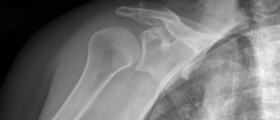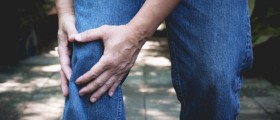
Frozen shoulders and the main signs that indicate it
Another term for the condition in question is adhesive capsulitis and it is primarily characterized by pain and stiffness in the shoulder area, and they do appear gradually but over time they aggravate and become more severe. However, what is interesting about this condition is that in a year or two, the problem tends to resolve on its own and it practically disappears. Since this problem occurs because of tightening and thickening of the capsule of connective tissue in the joint, people who are more susceptible to developing frozen shoulder are those whose shoulder has been immobilized for some time, either due to the recovery after some surgery or due to wearing a sling because of the fracture. The real cause of frozen shoulder is, however, not familiar to the doctors or scientist, but it is possible that it might be autoimmune in nature.
How to deal with frozen shoulder?
As it has already been said, within two years top, the person will realize that the condition resolved on its own. However, it is important to get through that period somehow and deal with the symptoms, which are not easy to deal with at all. What usually helps is stretching, because performing such exercises is beneficial in several ways. The muscles become stronger and the range of motion increases gradually, which is of great importance for those who suffer from frozen shoulder. A qualified physical therapist is the one who will suggest the most suitable ones for every single individual. Still, in order to manage the pain, and often in order to relieve stiffness as well, injections of corticosteroids are given to the patient because they successfully and quickly shorten the duration of the symptoms. Aside from them, the patients tend to rely on NSAIDs as well, as a very helpful means that keeps the symptoms under control. As for procedures that may be suggested in such cases, distention is one of them and it consists of injecting sterile water into the capsule of the joint in order to ease the movement. Another is shoulder manipulation, which is done under anesthesia because the doctor has to reposition the joint in question. Only a small number of cases is treated with surgery because other methods usually provide relief in the majority of patients. During the surgery, scar tissue and adhesions from the inside will be removed, which is usually done through a small cut in the joint.








-Causes,-Symptoms,-Diagnosis,-Treatment_f_280x120.jpg)








Your thoughts on this
Loading...